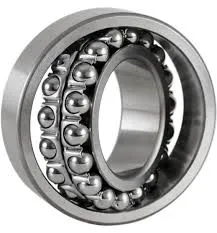
Nov . 19, 2024 18:12 Back to list
6310 bearing size
Understanding the 6310 Bearing Size Specifications and Applications
Bearings are crucial components in various mechanical systems, enabling smooth movement and reducing friction between moving parts. One of the widely used bearings in the industry is the 6310 bearing. Understanding its specifications, size, and applications can help engineers and technicians select the appropriate bearing for their machinery.
Specifications of the 6310 Bearing
The 6310 bearing is part of the single-row deep groove ball bearing family. Its numerical designation, 6310, reveals key information about its dimensions and structure. The 63 prefix indicates that it is a standard series for deep groove ball bearings, while the 10 signifies the bore diameter in millimeters. Specifically, the 6310 bearing has a bore diameter of 50 mm, an outer diameter of 110 mm, and a width of 27 mm. This makes it suitable for various applications, balancing size and load capacity effectively.
The 6310 bearing can handle radial loads and moderate axial loads in both directions. It is typically constructed from high-quality steel, which provides durability and resistance to wear. The bearing may also be shielded on one or both sides, protecting it from contaminants while retaining lubrication. Available variants include open, shielded (2Z), and sealed (RS), allowing for flexibility depending on specific operational requirements.
Applications of the 6310 Bearing
6310 bearing size

The versatility of the 6310 bearing allows it to be utilized in numerous applications across different industries. One of its primary uses is in electric motors, where it supports rotor and stator assemblies. Its ability to operate smoothly at high speeds makes it an ideal choice for applications that require continuous rotation and reliability.
In addition to electric motors, the 6310 bearing is commonly found in automotive applications, such as in wheel hubs and transmission systems. Its design effectively minimizes friction, resulting in better fuel efficiency and prolonged component life. Additionally, this bearing is used in industrial machinery, including conveyors and pumps, where it aids in the smooth operation of moving parts.
The agricultural sector also benefits from the 6310 bearing, with applications in tractors and harvesting equipment. The rugged nature of the bearing equipment allows it to withstand harsh working conditions while maintaining efficiency.
Conclusion
In summary, the 6310 bearing size is a vital component in various mechanical systems, characterized by its dimensions of 50 mm bore diameter, 110 mm outer diameter, and 27 mm width. Its deep groove ball design enables it to handle various loads effectively, making it a preferred choice in industries ranging from automotive to agriculture. Understanding the specifications and potential applications of the 6310 bearing is essential for making informed decisions when selecting bearings for specific operational needs. With its robust performance and versatility, the 6310 bearing continues to play a significant role in enhancing machinery efficiency and reliability.
Latest news
-
Premium Deep Groove Ball Bearings | High Speed & Reliability
NewsAug.29,2025
-
Durable Scaffolding Clamps - Secure & Reliable Tube Connectors
NewsAug.28,2025
-
Common Failures in Thrust Ball Bearings and Solutions
NewsAug.22,2025
-
How Tapered Roller Bearings Can Take Shock Loads
NewsAug.22,2025
-
Angular Bearings in High-Precision Spindles
NewsAug.22,2025
-
The Impact of Misalignment on Cylindrical Roller Bearing Performance
NewsAug.22,2025
